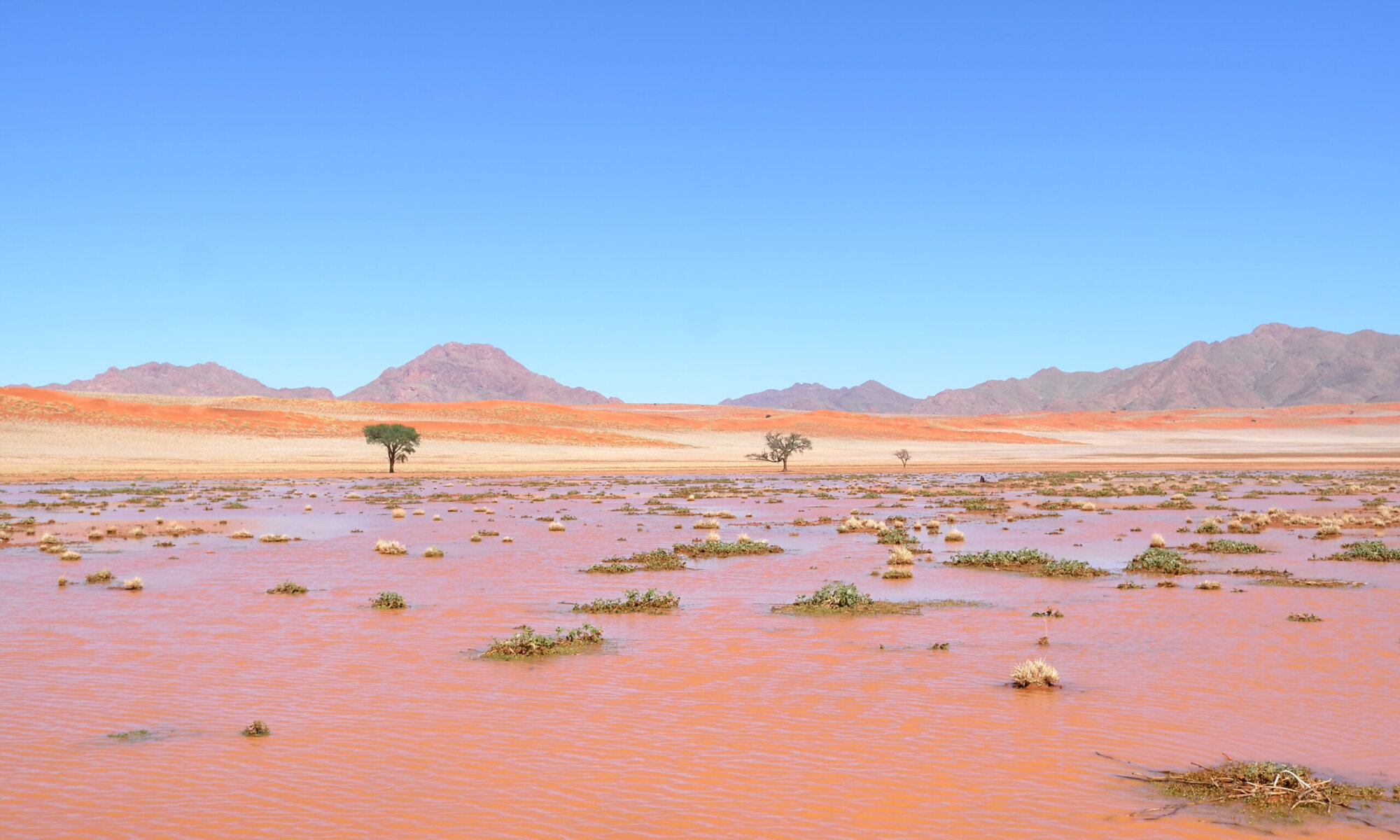Crossing the Namibia border is a somewhat strange but fairly straightforward experience. After the town of Springbok where we spend a night, we drive for 118km through remote and barely inhabited landscape in South Africa. Then the Fiooldrif border post appears literally out of nowhere. A dusty holding area for trucks on the South African side with a general store and a few idlers hanging out around it. And…really nothing on the Namibian side for several miles until the (very) small town of Nordoewer (about ten houses + a petrol station).
We clear the South African border fairly quickly but spend an hour tackling the Namibian bureaucracy on the other side. As we’re almost finished an undercover customs’ agent parading as a “surveyor for the Namibian tourist authority” asks us a few questions on our purchases in South Africa and is promptly followed by a uniformed customs official who starts to check our boot and ask us questions about the value of various items. We had seriously stocked up on grocery items before leaving South Africa in anticipation of the many miles of desert driving in Namibia – so the inspection could have taken a fair amount of time. I get into a surreal conversation about the price of a four-pack of ice tea with the customs official. About $2, I say. No, it must be at least $6, says he. We finally settle on $4. Satisfied that he was (more or less…) right, he lets us go on our way without further ado.
Our first few hours driving in Namibia are a complete culture shock. Namibia is empty, literally. As if some giant black hole had sucked all the (human) life out of it. With an area of 824,000sqkm and a population of just 2 million, it is one of the world’s least densely populated countries, mostly covered by two of the world’s great deserts, the Kalahari and the Namib, the world’s oldest desert.

